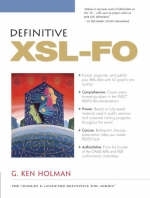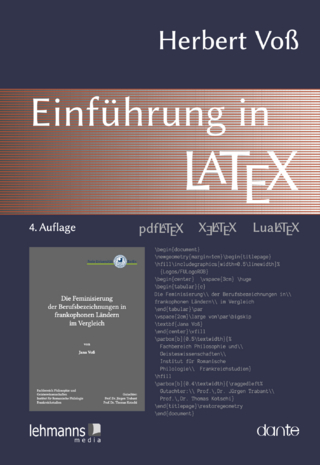
Definitive XSL-FO
Prentice Hall (Verlag)
978-0-13-140374-1 (ISBN)
- Titel ist leider vergriffen;
keine Neuauflage - Artikel merken
Definitive XSL-FO delivers concise, authoritative coverage of every key facet of the new W3C recommendation, XSL-FO. XSL-FO (XSL Formatting Objects) is the critical enabling technology that allows enterprise applications to produce production-quality output from large XML data stores. There is a large constituency of users of information who prefer the printed format of physical pages over the screen format of a web document. As more web services are deployed and more companies bring more of their information into XML structures, the need for the printed form will grow. Developers have long been used to producing HTML reports and screen-based results, without considering paginating their information into a form (such as a PDF file) suitable for printing.
G. KEN HOLMAN is Chief Technology Officer for Crane Softwrights Ltd. and Canadian chair of the ISO SGML standards group. Ken is an invited expert to the W3C®, a member of the W3C Working Group that developed XML, and founder of the OASIS Technical Committees for XML and XSLT conformance. His many books on XML technologies include Definitive XSLT and XPath. About the Series EditorCHARLES F. GOLDFARB is the father of XML technology. He invented SGML, the Standard Generalized Markup Language on which both XML and HTML are based. You can find him on the Web at www.xmlbooks.com.
Foreword.
Preface.
Acknowledgements.
1. Introducing XSL-FO.
2. XSL-FO in context.
The XML Family of Recommendations. Examples.
3. Basic Concepts.
Formatting and Rendering. Processing Model. Formatting Object XML Vocabulary.
4. Areas and Pages.
Area Model Details. Block and Inline Basics. Container Basics. Page Definition and Sequencing.
5. Generic Body Constructs.
Lists. Graphics and Foreign Objects. Links. Leaders.
6. Tables.
Tabular Structure. Tabular Appearance.
7. Static Content and Page Geometry Ssequencing.
Page Regions, Headers, and Footers. Content Definition 199. Page Sequence Master Interleave (PSMI). Page Geometry Sequencing.
8. Floats and Footnotes.
Floats. Footnotes.
9. Breaks, Borders, and Backgrounds.
Breaks. Widows and Orphans. Keeps. Spacing, Conditionality, and Precedence. Borders. Backgrounds.
10. Interactive Objects.
Reflecting Formatting Object State by Appearance. Interactively Changing the Effective Flow.
11. Supplemental Objects.
Specialty Formatting Objects. The Importance of Bidirectional Text. The Mechanics of Mixing Text of Different Writing Directions. The Bidirectional Support Challenge. The Bidi-Override Object. The Character Object. The Color-Profile Object. The Declarations Object.
Appendix A. Using XSLT with XSL-FO.
XSLT Language Features Supporting XSL-FO. XSL-FO Language Features Similar to XSLT and Xpath.
Appendix B. Expressions.
Production Summary. XSL-FO Functions.
Appendix C. Objects.
Objects Summarized by Name. Objects Summarized by Type.
Appendix D. Properties.
Common Properties. Data Types. Inheritance and Shorthands. Property Summary.
Appendix E. Choosing XSL-FO Products.
Index.
| Erscheint lt. Verlag | 1.4.2003 |
|---|---|
| Verlagsort | Upper Saddle River |
| Sprache | englisch |
| Maße | 234 x 178 mm |
| Gewicht | 744 g |
| Themenwelt | Mathematik / Informatik ► Informatik ► Datenbanken |
| Informatik ► Grafik / Design ► Desktop Publishing / Typographie | |
| Mathematik / Informatik ► Informatik ► Programmiersprachen / -werkzeuge | |
| Mathematik / Informatik ► Informatik ► Web / Internet | |
| ISBN-10 | 0-13-140374-5 / 0131403745 |
| ISBN-13 | 978-0-13-140374-1 / 9780131403741 |
| Zustand | Neuware |
| Haben Sie eine Frage zum Produkt? |
aus dem Bereich


